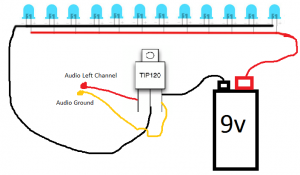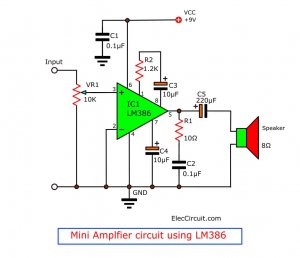The kits they have for "Fuzz" boxes and other distortion boxes are so cheap, and there are so many free schematics out there. The only thing is you can get pre-made stuff so cheap, and all in one unit, it doesn't warrant the time and effort, but it is fun. I have a electronic box (suitcase) that generates since, square, and other frequencies, has built in power supply rails, and a huge bread box, all which are powered. I've made many circuits on that aluminum case.
It was the first thing we had to build in electronics school. Mine came out perfect the first time around, I ended up being the teachers assistance, helping the other students. They were a real good bunch of guys, and all appreciated the help. Mostly, it was people using too much solder and ending up with cold connections. One kid had around 3/8ths of an inch solder on every connection, I still don't know how he could build that much up. The teacher was sometimes a jerk, and just thought the kid was screwing around, after I showed him how to use a solder sucker, we cleaned the box up, and it looked and worked perfectly.
I opened my audio/TV repair shop 6 months into the 1.5 year course. The school backed me all the way, and the State of Connecticut issued me a V1 license, as the whole electronics repair system of training had broken down. I ended up, after 6 months, I had purchased a better O'scope than the school had. I ended up going to school only twice a week, as I had so much work, I could not afford to waste time there. My immediate teacher had just retired his shop, and was teaching, to do something. He had a repair shop for 30 years, boy did he help me out a lot.
I was given my diploma, even though I was hardly ever there, but every time I showed up, they were so far behind me, I ended up teaching classes on how to get a T.V. back to basic operating condition and then hunt down the problems. I specialized in Sony Camcorders, and Sony T.V's, Mitsubishi too, as they were the best units, and in the town I lived, that's all people purchased. Sony approached me about becoming a certified repair center, and when they told me how much they would give me for each repair, I declined, I made twice that amount, easily, and Sony wanted to charge full retail on the repair, they just wanted a bigger slice of my pie! Audio repair was where the big money was. That upscale town had some real audoiophiles, and they wanted the amp they paid $10K for fixed, and I whacked them too! Never had an unhappy customer. I re-coned speakers too, lots of Bang and Olufsen speakers, and nobody does that anymore. B&O speakers are beautiful, insanely expensive speakers.




